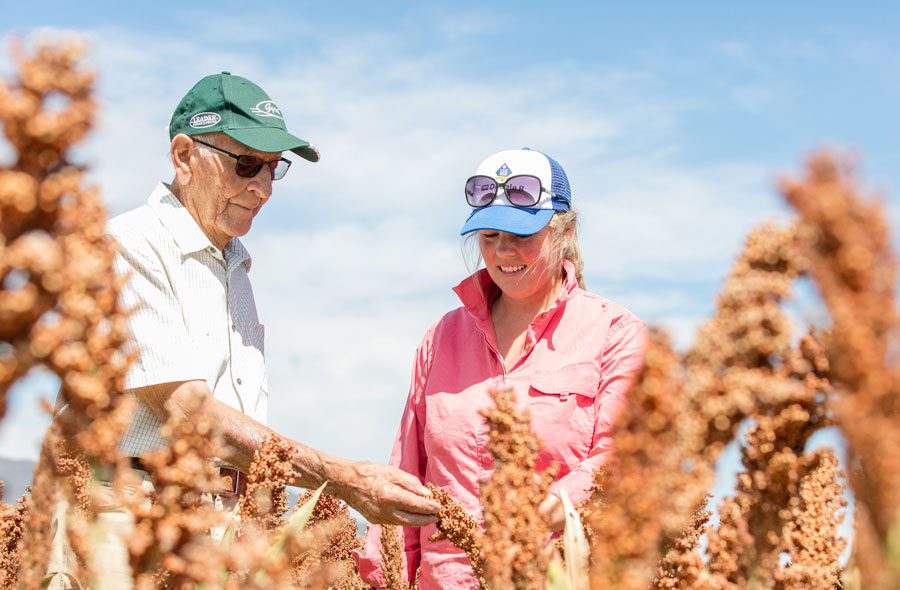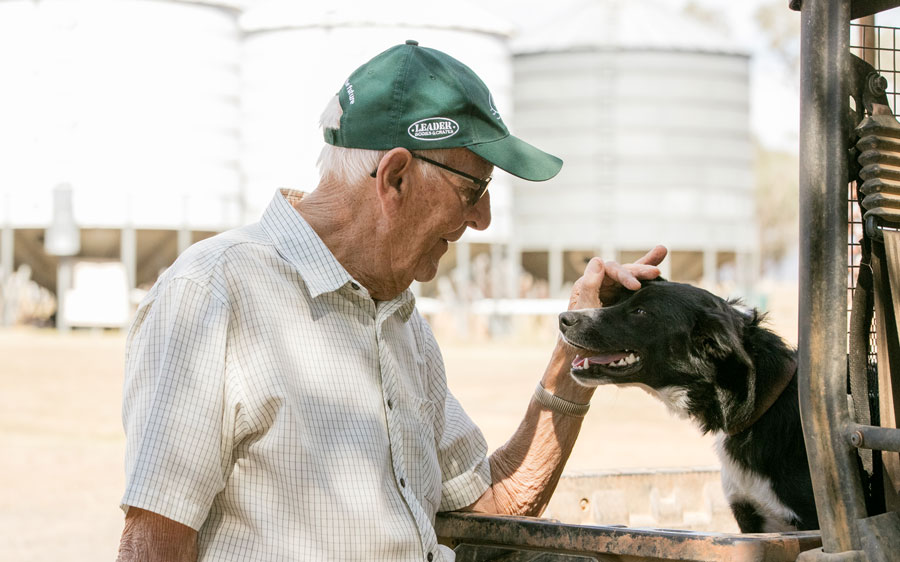Crop competitions encouraged a younger Jim Hombsch to join his local agriculture bureau back in the early 1960s.
Today, Jim is well known at the Duri Agricultural Bureau, south of Tamworth, and has worn many hats for the group, including secretary and president. He is now its patron and still doing well on the competition front.
Jim and his son Gavin came a close second in the 2023 canola competition. They finished on 110 points, just one point behind the winning entry.
Gavin says the crop did well, given the conditions. “We had a lot of heat early on in 2023 and canola has only got to spend a few days over 27°C and it starts avoiding flowering. So, we had some yield limitations, including the fact that it was running out of moisture.”
The Duri Agricultural Bureau is one of the longest-running agricultural bureaus still operating. Originally set up by the New South Wales Department of Agriculture in 1910, its role was to disseminate information and organise educational activities in rural areas.

Duri Agricultural Bureau patron Jim Hombsch and president Emily Stirling both farm near each other close to Tamworth in NSW. Photo: Mel Jenson
Annual crop competitions for wheat, barley, canola and sorghum still play an important role and encourage friendly banter among growers while helping members walk through what worked and what didn’t.
Duri Agriculture Bureau president Emily Stirling says everyone gets a chance to talk about performance, fertilisers, sowing times and different varieties.
Gavin agrees and says grain research has played an important role for Duri and its members over the years, especially as world demand for grain, including livestock feed, has dramatically increased.
“I would use the poultry industry as a prime example of the increased need for grain. Forty years ago, in its infancy, the poultry industry had little impact on Australian feed grain stocks. Today, with millions of birds being killed daily, as a ‘cheap’ source of protein, it plays a significant role in the requirement for grain.
“To cater for this demand, we as producers have lent heavily on grain research to target higher yield, disease resistance, drought tolerance, better grain storage techniques, crop rotations, risk management, and water use efficiency.”
He says chasing higher yields is an ongoing research and on-farm process. “It can subject the plant to greater exposure to disease or other unforeseen issues.
“The grain industry levy, as well as royalties paid to private plant breeders, helps fund this research and gives producers like us some comfort knowing there is ongoing support for the production side of the grain industry.”
Quality awards
Growers who enter the barley and wheat competitions can also provide a sample of the crop for the quality awards, which are collected and taken to the NSW Department of Primary Industries (DPI) in Tamworth.
Emily says these awards would not be possible without the local DPI’s assistance and support. “They have tested samples for several years.”
After judging, growers discuss results in a social setting. Emily says everyone looks forward to this. “It promotes camaraderie among the group.”
Duri’s younger members also relish the chance to catch up at events such as crop competitions.
Darcy Doyle, who farms with his parents Amanda and Scott at Somerton, says it is great to get together and talk about farming practices and varieties. “It’s got a real social aspect too, where we can have a laugh. It’s great to catch up.”
Award win
Duri itself has also been winning awards. It won the 2023 Brownhill Cup at last year’s AgQuip Grower Forum, an event hosted by the NSW DPI and GRDC with NSW Farmers.
The Brownhill Cup recognises contributions to primary industries, celebrating those that develop and support new and innovative ways to enhance practices and ensure sustainable long-term productivity.
At the time, NSW DPI Northern Cropping Systems director Dr Guy McMullen said Duri’s work was a building block for farming practice excellence. “But also, (it provides) friendship and support for growers that goes a long way in supporting members during the good years and challenging times.”
Emily says receiving the Brownhill Cup is a wonderful recognition of the work the group has done within the district through successive generations of growers. “The Ag Bureau has continued to provide a forum for our members to meet regularly, share information and support each other.”
Family history mirrors industry evolution
Jim Hombsch had just finished school when he took on his family’s farm in the 1950s.
“I had to, or the family farm would have been sold. My father took on the farm in 1920 as part of the soldier settler scheme. Our farm today takes in that original block.”
Today he and his son Gavin farm 715 hectares at Warral, near Tamworth. A typical cropping phase starts after a pasture phase and includes canola, wheat, barley, a grazing oat, then back into a pasture, mostly lucerne. They also run a prime lamb operation and have 1000 crossbred ewes.

Duri Ag Bureau patron Jim Hombsch has always felt a connection to the land and animals, including his latest border collie Jenny. Photo: Mel Jenson
Looking back across his time, Jim says the introduction of chemicals changed agriculture tremendously.
“The ability to farm with good ground cover is something that we couldn’t do. When I started farming, we had no chemicals. There was no fertiliser use. And there was no machinery. Other than just ploughs that could handle trash.
“So our ability to farm as we do today just didn’t exist. Our fallows were bare and the biggest problem weed was black oats. When we look across our paddocks now, they are nice and clean … no black oats.
“That was not the case years ago because we just had no way to control them, other than to cultivate or use a rotation or livestock. So I guess the changes are seen in technology, in chemicals and mechanisation. And the fact that we can do so much more with available labour.”
A consistent thread is a love of the land. “In my view, if you don’t have a love for the land, you won’t be successful. You also need an understanding and a love for animals too.”
For the Hombsch family, this extends to their working dogs. Jim has bred border collies for years and cannot remember not having one by his side: “I have had some really good working dogs and they make a tremendous difference to what you can do on-farm.”
For more details on GRDC’s grazing research and grower group support:

























































